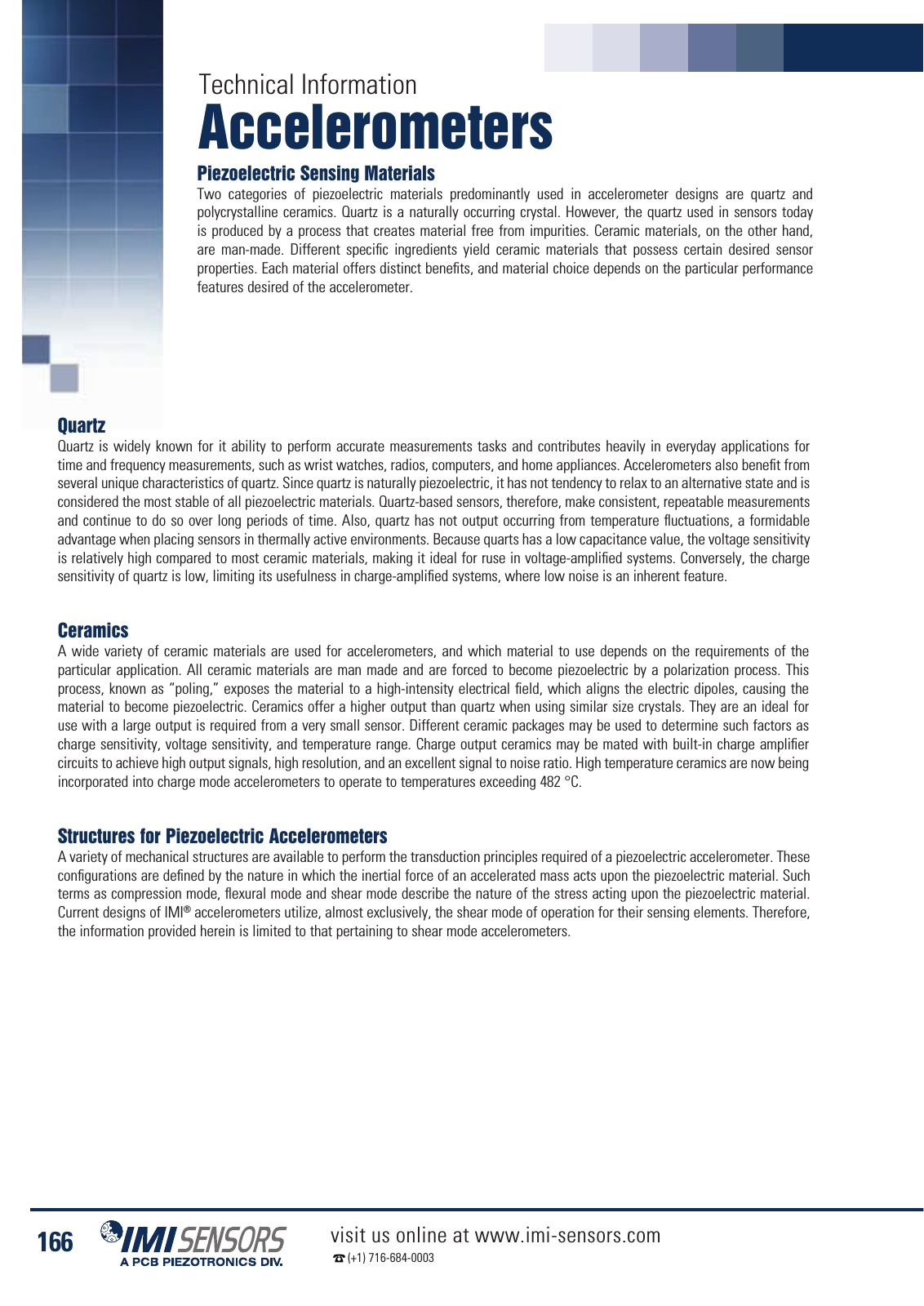IMI Industrial Vibration Sensors Katalog Seite 169
Hinweis: Dies ist eine maschinenlesbare No-Flash Ansicht.Klicken Sie hier um zur Online-Version zu gelangen.
Inhalt
Technical Information Accelerometers Piezoelectric Sensing Materials Two categories of piezoelectric materials predominantly used in accelerometer designs are quartz and polycrystalline ceramics Quartz is a naturally occurring crystal However the quartz used in sensors today is produced by a process that creates material free from impurities Ceramic materials on the other hand are man made Different specific ingredients yield ceramic materials that possess certain desired sensor properties Each material offers distinct benefits and material choice depends on the particular performance features desired of the accelerometer Quartz Quartz is widely known for it ability to perform accurate measurements tasks and contributes heavily in everyday applications for time and frequency measurements such as wrist watches radios computers and home appliances Accelerometers also benefit from several unique characteristics of quartz Since quartz is naturally piezoelectric it has not tendency to relax to an alternative state and is considered the most stable of all piezoelectric materials Quartz based sensors therefore make consistent repeatable measurements and continue to do so over long periods of time Also quartz has not output occurring from temperature fluctuations a formidable advantage when placing sensors in thermally active environments Because quarts has a low capacitance value the voltage sensitivity is relatively high compared to most ceramic materials making it ideal for ruse in voltage amplified systems Conversely the charge sensitivity of quartz is low limiting its usefulness in charge amplified systems where low noise is an inherent feature Ceramics A wide variety of ceramic materials are used for accelerometers and which material to use depends on the requirements of the particular application All ceramic materials are man made and are forced to become piezoelectric by a polarization process This process known as poling exposes the material to a high intensity electrical field which aligns the electric dipoles causing the material to become piezoelectric Ceramics offer a higher output than quartz when using similar size crystals They are an ideal for use with a large output is required from a very small sensor Different ceramic packages may be used to determine such factors as charge sensitivity voltage sensitivity and temperature range Charge output ceramics may be mated with built in charge amplifier circuits to achieve high output signals high resolution and an excellent signal to noise ratio High temperature ceramics are now being incorporated into charge mode accelerometers to operate to temperatures exceeding 482 C Structures for Piezoelectric Accelerometers A variety of mechanical structures are available to perform the transduction principles required of a piezoelectric accelerometer These configurations are defined by the nature in which the inertial force of an accelerated mass acts upon the piezoelectric material Such terms as compression mode flexural mode and shear mode describe the nature of the stress acting upon the piezoelectric material Current designs of IMI accelerometers utilize almost exclusively the shear mode of operation for their sensing elements Therefore the information provided herein is limited to that pertaining to shear mode accelerometers 166 visit us online at www imi sensors com 1 716 684 0003
